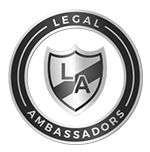In California, and in many other states across the nation, DUI checkpoints are used as a way to monitor the streets and keep drunk drivers off the roads. According to the Governors Highway Safety Association, California holds at least 2,500 checkpoints annually in accordance with state and federal laws. While law enforcement officers require grounds for suspicion to pull you over on most occasions, DUI checkpoints allow officers to check drivers without any probable cause.
Although DUI checkpoints are legal, officers must abide by certain rules in order to avoid infringing on your rights. In California, the checkpoints must be set up and run by supervising officers. Officers must stop drivers randomly or all motorists in a neutral fashion, without discrimination. DUI checkpoints should be placed in a practical location and at a time where motorists will not be danger when slowing down for the roadblock. Furthermore, there must be proper signage and notification indicating that the stop is a DUI Defense checkpoint. Motorists should be held by officers for a minimal amount of time during each check and should not be made to exit their vehicle unless there is reasonable suspicion of a wrongdoing.
While the time and location of DUI roadblocks should be publicly advertised, it is not a legal requirement. As a motorist, you have the right to turn your vehicle around to avoid going through the checkpoint. In addition, you may refuse to comply with the officer’s directions, but you may be ticketed for doing so.
This information is intended to educate and should not be taken as legal advice.






